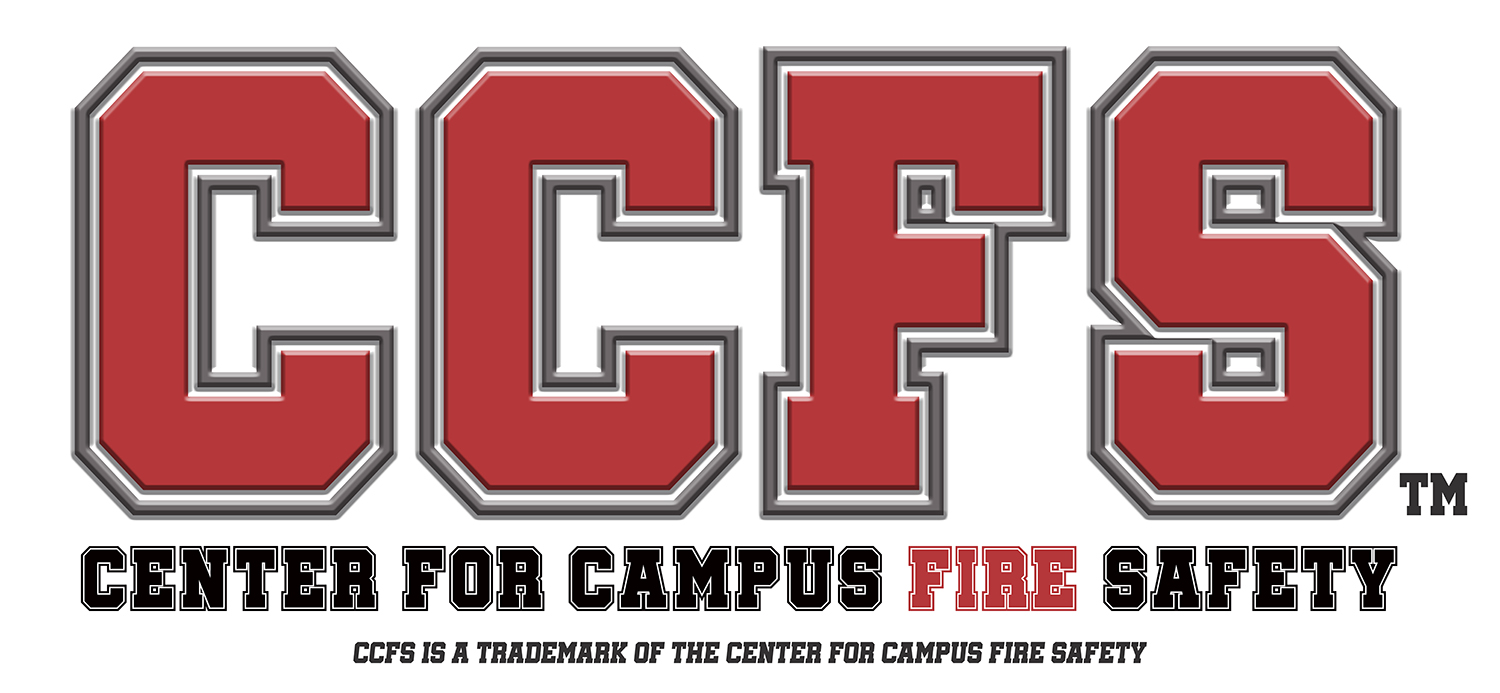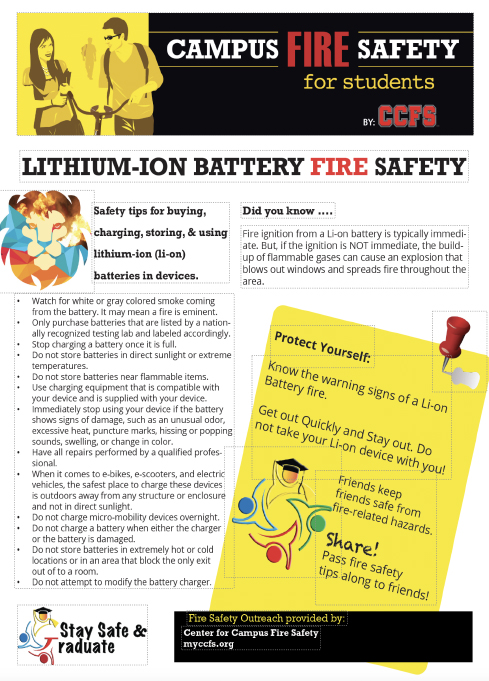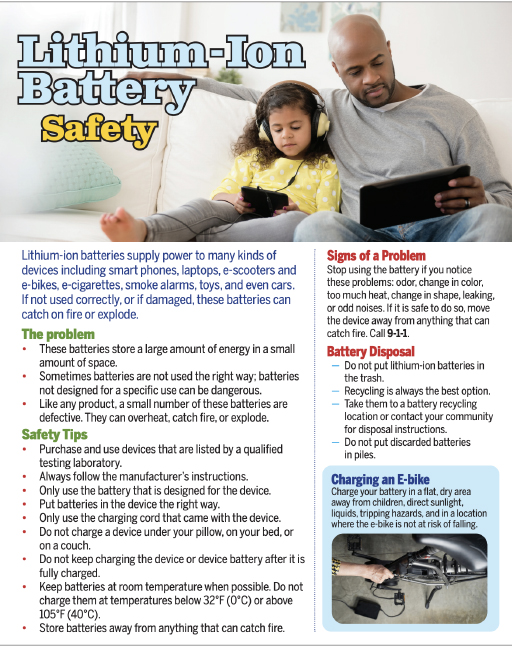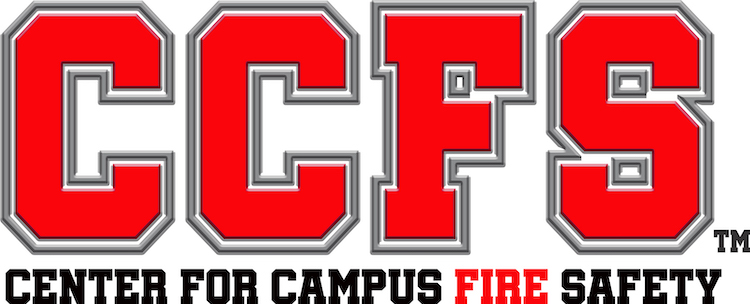|

Micro-mobility/Lithium Ion Battery Fire Reporting Program
Having data on micro-mobility/Lithium Ion battery fires is a resource campus fire safety professionals can use to assist in the development of educational programs, policies/procedures, and advocacy efforts. The report is easy to complete in less than five minutes.
- The data reporting system is open to all colleges/universities, fire departments, and state and local code fire/code enforcement agencies.
- Data information will be published twice a year (January and June) and will be available anytime by request by emailing: [email protected].
- We are only collecting data for On-Campus, Office Campus, and Greek Housing based on established CCFS criteria as defined below:
- On-Campus Incident: Any related incident occurring on a college or university campus. This includes academic, faculty, laboratories, physical plant, residence halls and family housing.
- Off-Campus Incident: This includes a rented house, duplex, apartment, rooming house or privately owned residence hall that was not the student’s permanent (family) residence.
- Greek Housing: Any related fire incident in a fraternity or sorority house.
| |
CCFS Statistics |
CCFS Flyer |
|


|
Li-on Data Collection Stats to date:
Between December 2023 to May 1, 2025, there were 23 fires reported to the CCFS data collection program:
- 78% Occurred inside the building. In only 9% of these occurrences the device was able to be moved outside and extinguished.
- Fire incidents were approximate 40% residential and 60% non-residential buildings, 100% of these occurred On Campus (any type of building or outside)
- Devices causing these incidents:
- Scooter 31%
- e-Bike 15%
- Skateboard 46%
- Other 8%: iPad, drone, percussion massage gun, video camera, specialized titanium cased battery pack for undersea deployment
- 43% of the devices were charging.
- 91% caused damages ranging from melted batteries to property/room damages. One of these incidents resulted in $200,000 in damages to the building and contents.
- 13% of the reported incidents resulted in victims ranging from needing post incident counseling services to respiratory issues.
- 100% of all areas were protected by sprinklers as noted below.
| Yes - one or more sprinklers activated and controlled the fire |
26.09% |
| No - one or more sprinklers activated but did not control the fire |
43.48% |
| Sprinklers were present in the area of origin but did not activate |
4.35% |
| Sprinklers were present in the area of origin, but the fire was extinguished before the sprinklers activated |
17.39% |
(Posted: May 2025 | Next Update in 2025)
|
(Contact CCFS to add your logo to this flyer)
|
| |
OTHER USEFUL INFO AND LINKS
|
|
 |
From: UL’s Fire Safety Research Institute
Lithium-ion battery safety campaign
Underwriters Laboratories’ Fire Safety Research Institute (FSRI) launched a new lithium-ion battery safety campaign earlier this month, Take C.H.A.R.G.E. of Battery Safety. The launch comes ahead of this year’s holiday shopping season, when many consumers will be purchasing lithium-ion battery-powered devices without an understanding of potential fire risks.
FSRI is calling on the fire service and other community influencers to watch and share its new public serve announcement (PSA). The campaign aims to educate the public on how they can protect themselves and their property. FSRI has created a website for the campaign, BatteryFireSafety.org, which features the PSA and many additional free resources for the public and first responders. The site features a toolbox for first responders with a set of downloadable materials to use in public education and interaction with local media.
The Take C.H.A.R.G.E. of Battery Safety campaign was launched at a press event at the training academy of the Fire Department of the City of New York (FDNY) on Nov. 15. The event featured speakers from the Bureau of Alcohol, Tobacco, Firearms, and Explosives (ATF), the Consumer Product Safety Commission, the FDNY, the U.S. Fire Administration, and the FSRI. Speakers’ presentations were followed by a live fire demonstration of an overcharged e-bike. The live stream of the event was recorded and is now available on the FDNY’s YouTube channel. (Source: FSRI)
|
To learn more and access the Take C.H.A.R.G.E. of Battery Safety campaign materials, visit FSRI’s BatteryFireSafety.org.
|
 |
From NFPA:
Lithium-ion batteries are increasingly found in devices and systems that the public and first responders use or interact with daily. While these batteries provide an effective and efficient source of power, the likelihood of them overheating, catching on fire, and even leading to explosions increases when they are damaged or improperly used, charged, or stored. NFPA offers several resources that provide information to promote safer use of lithium-ion batteries across a wide range of applications.
|
NFPA offers several fact sheets and resources on Lithium Ion Batteries.
|
|












